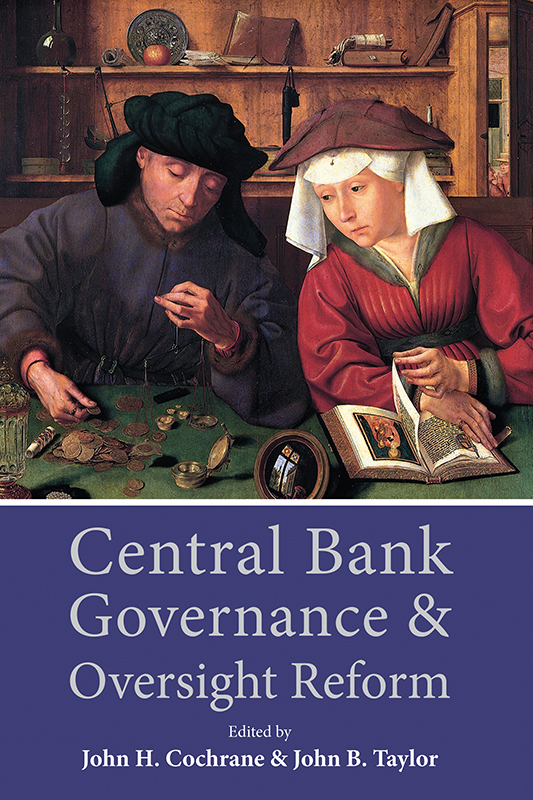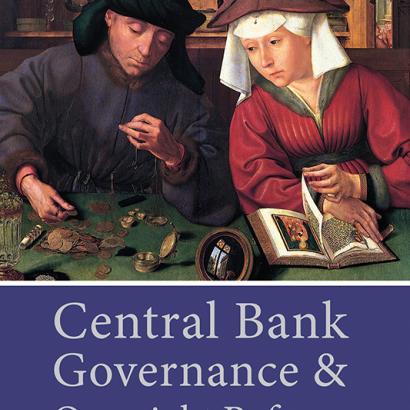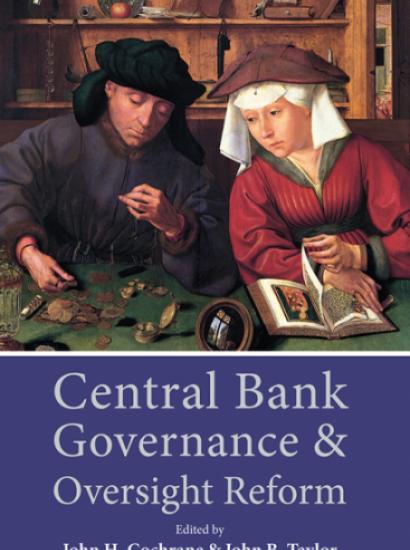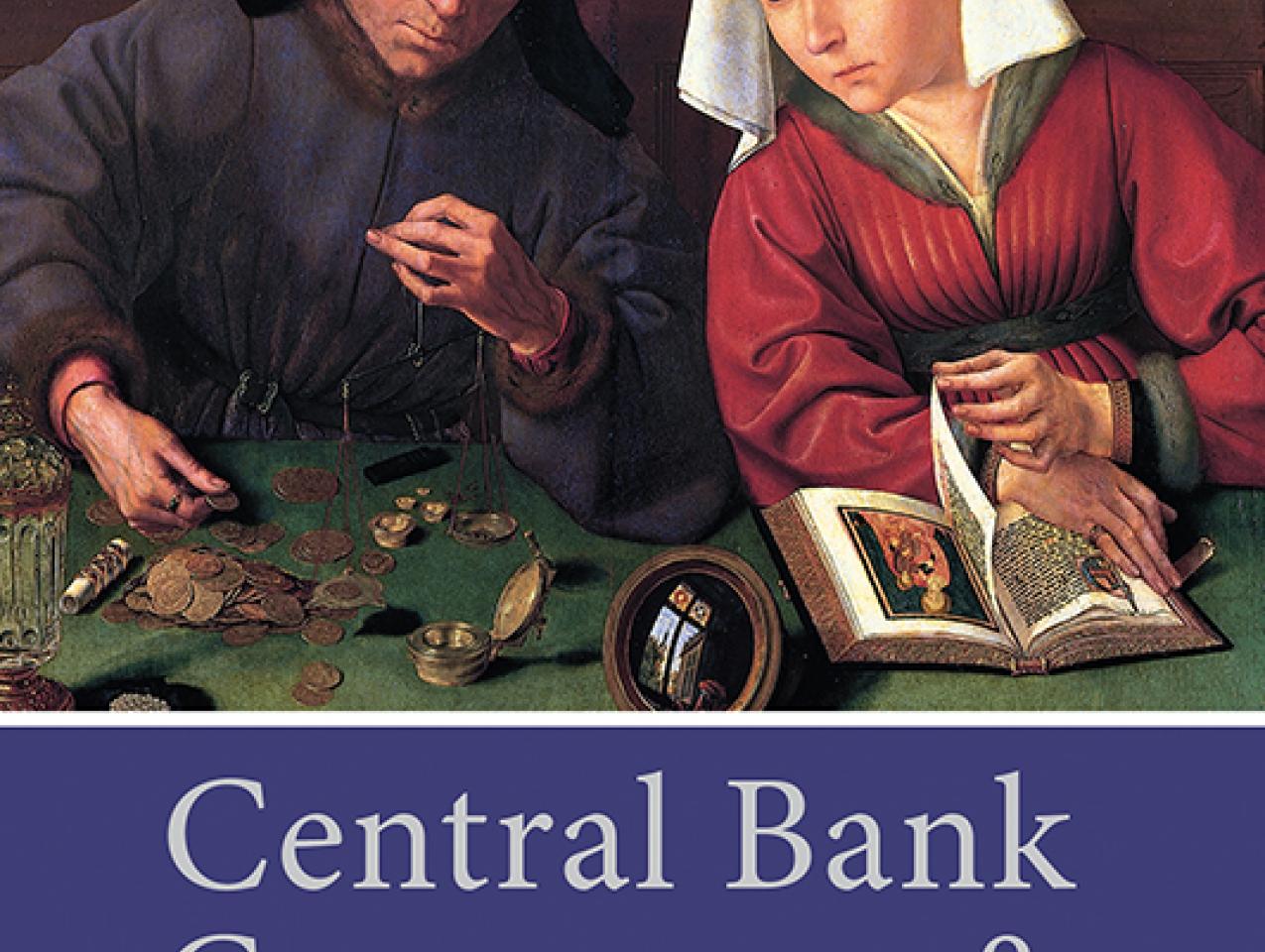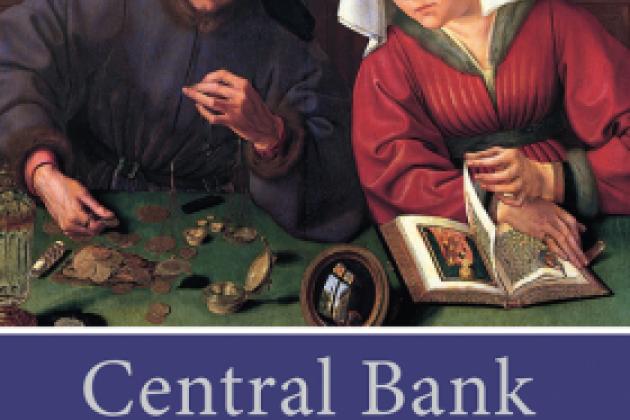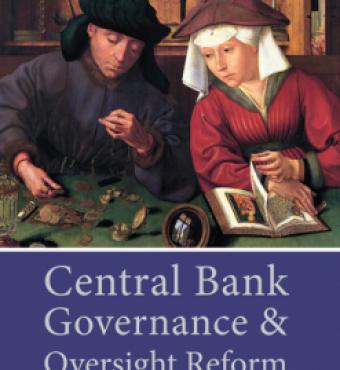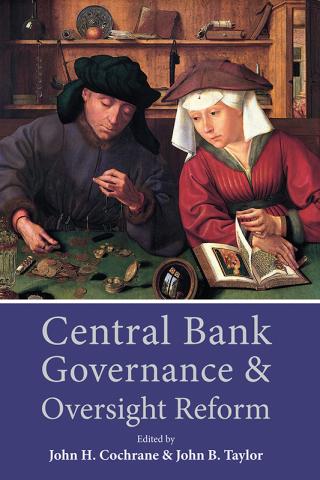- Economics
- Budget & Spending
- Monetary Policy
- Law & Policy
- Regulation & Property Rights
- Understanding the Effects of Technology on Economics and Governance
Publication Date: May 2016
A central bank needs authority and a sphere of independent action. But a central bank cannot become an unelected czar with sweeping, unaccountable discretionary power. How can we balance the central bank’s authority and independence with needed accountability and constraints? Drawn from a 2015 Hoover Institution conference, this book features distinguished scholars and policy makers’ discussing this and other key questions about the Fed. Going beyond the widely talked about decision of whether to raise interest rates, they focus on a deeper set of questions, including, among others, How should the Fed make decisions? How should the Fed govern its internal decision-making processes? What is the trade-off between greater Fed power and less Fed independence? And how should Congress, from which the Fed ultimately receives its authority, oversee the Fed?
The contributors discuss whether central banks can both follow rule-based policy in normal times but then implement a discretionary do-what-it-takes approach to stopping financial crises. They evaluate legislation, recently proposed in the US House and Senate, that would require the Fed to describe its monetary policy rule and, if and when it changed or deviated from its rule, explain the reasons. And they discuss to best ways to structure a committee—like the Federal Open Market Committee, which sets interest rates—to make good decisions, as well as offer historical reflections on the governance of the Fed and much more.
John H. Cochrane is a senior fellow at the Hoover Institution. Before joining Hoover, he was a professor of finance at the University of Chicago’s Booth School of Business. He is also a research associate of the National Bureau of Economic Research.
John B. Taylor is the George P. Shultz Senior Fellow in Economics at the Hoover Institution and the Mary and Robert Raymond Professor of Economics at Stanford University. He chairs the Hoover Working Group on Economic Policy and is director of Stanford’s Introductory Economics Center.
Download PDFs of individual chapters below.
Preface
By John H. Cochrane and John B. Taylor
Chapter 1: How Can Central Banks Deliver Credible Commitment and Be “Emergency Institutions”?
By Paul Tucker
Chapter 2: Policy Rule Legislation in Practice
By David H. Papell, Alex Nikolsko-Rzhevskyy and Ruxandra Prodan
Chapter 3: Goals versus Rules as Central Bank Performance Measures
By Carl E. Walsh
Chapter 4: Institutional Design: Deliberations, Decisions, and Committee Dynamics
By Kevin M. Warsh
Chapter 5: Some Historical Reflections on the Governance of the Federal Reserve
By Michael D. Bordo
Chapter 6: Panel on Independence, Accountability, and Transparency in Central Bank Governance
By Charles I. Plosser, George P. Shultz, and John C. Williams







